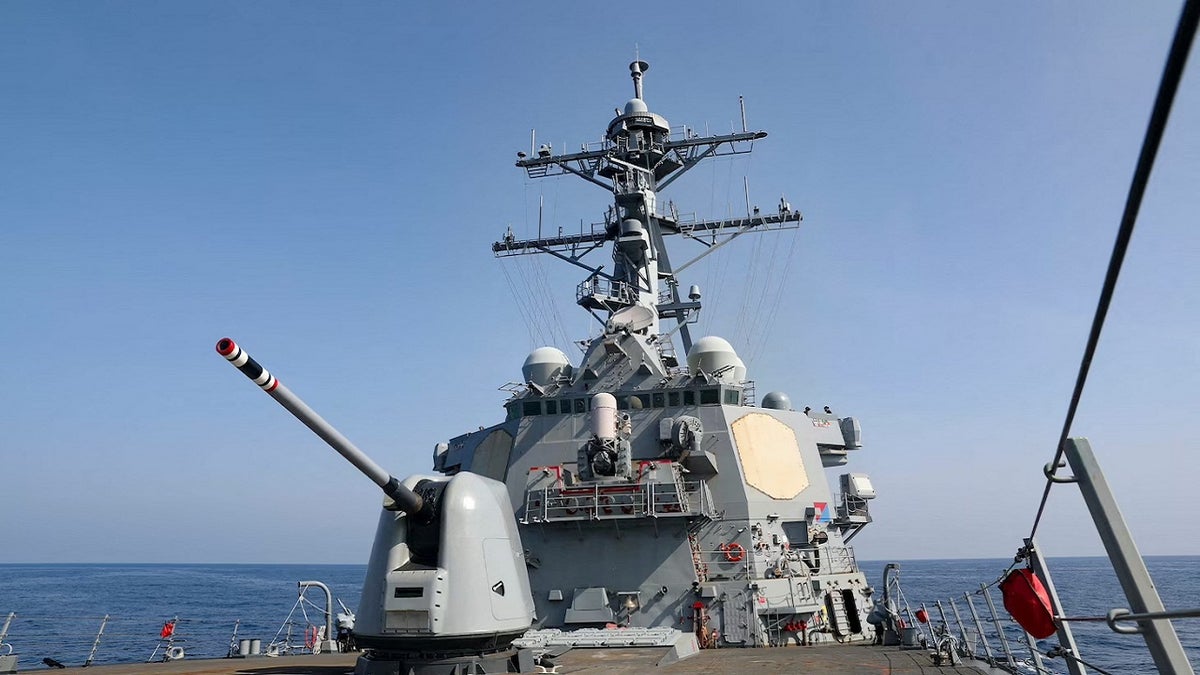Fox News Flash top headlines for January 22
Fox News Flash top headlines are here. Check out what's clicking on Foxnews.com.
A secretive lab in China has reportedly carried out a simulation in which hypersonic missiles and satellites launched an attack on American warships.
Details about the test – in which Chinese projectiles were launched from about 750 miles away and climbed more than 120 miles into the sky before raining down on the U.S. warships – surfaced in a December paper written in part by Liu Shichang, a scientist working at a facility in Chengdu that has ties to the country’s military, according to the South China Morning Post.
"Commanding height has always been a pivotal tactic in war since ancient times," Liu said, according to the news organization. "With the evolution of the concept of war and the advancement of technology, space has become a new commanding height fiercely contested by the world’s military powers."
In the computer simulation, the Chinese hypersonic missiles had assistance from numerous low-orbit electronic warfare satellites positioned above American ships, the paper reportedly said.
SEARCH FOR MISSING NAVY SEALS IN ARABIAN SEA CALLED OFF

The Arleigh Burke-class guided-missile destroyer USS Fitzgerald is seen in the Pacific Ocean in September 2014. China reportedly has carried out a simulated attack against a U.S. aircraft carrier strike group. (U.S. Navy/Mass Communication)
Those satellites found radar signals coming from the U.S. ships and then fired back similar ones to create background noise and help mask the locations of the missiles, according to the South China Morning Post.
Once the missiles came within 30 miles of their targets, "the satellites complete their suppression mission, the missile-borne jammers are activated, and the missiles perform terminal maneuvers for further penetration until they destroy the target," it quoted the paper as saying.

The People's Liberation Army Navy frigate Yantai sets sail from the port of Yantai on April 25, 2023. The simulation did not disclose where the missiles were fired from, according to the South China Morning Post. (CFOTO/Future Publishing via Getty Images)
The paper based the U.S. detection capability on the SPY-1D radar developed by Lockheed Martin that is used in the Navy’s Arleigh Burke-class destroyers and stated that only two or three low-orbit satellites would be enough to attack an aircraft carrier group, the South China Morning Post reports.
The exact kind of hypersonic missile that was used in the simulation was not identified, but its stated range is similar to China’s YJ-21 missile, the newspaper also reported.

The Arleigh Burke-class guided-missile destroyer USS Milius conducts a Taiwan Strait transit operation on April 17, 2023. (U.S. Navy/Reuters)
CLICK HERE TO GET THE FOX NEWS APP
Fox News Digital has reached out to the U.S. Navy for comment.




















